Linbi Hong
Latent neural source recovery via transcoding of simultaneous EEG-fMRI
Oct 05, 2020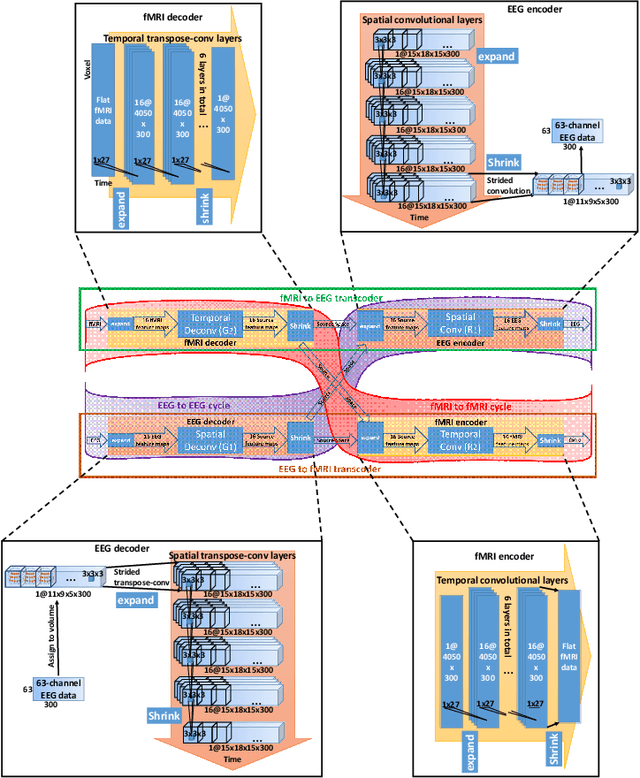
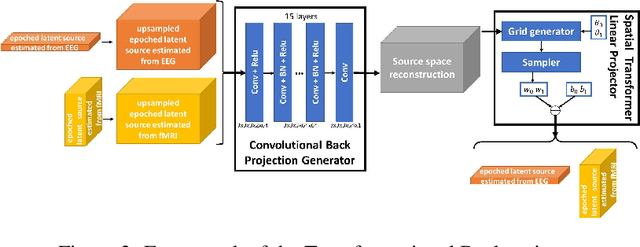
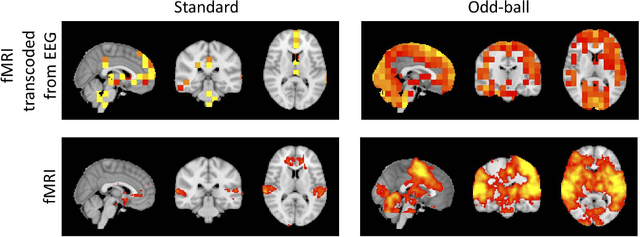
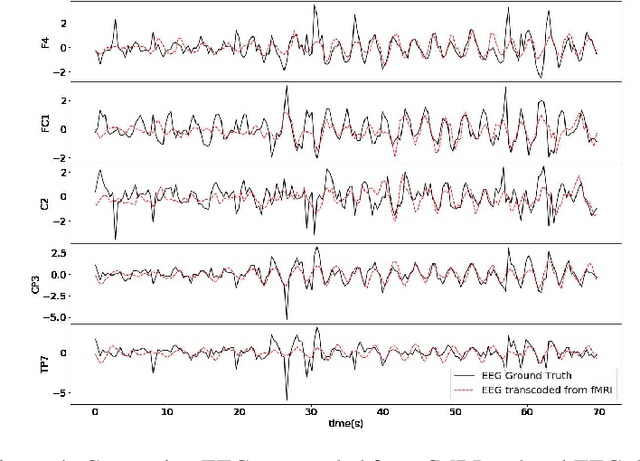
Abstract:Simultaneous EEG-fMRI is a multi-modal neuroimaging technique that provides complementary spatial and temporal resolution for inferring a latent source space of neural activity. In this paper we address this inference problem within the framework of transcoding -- mapping from a specific encoding (modality) to a decoding (the latent source space) and then encoding the latent source space to the other modality. Specifically, we develop a symmetric method consisting of a cyclic convolutional transcoder that transcodes EEG to fMRI and vice versa. Without any prior knowledge of either the hemodynamic response function or lead field matrix, the method exploits the temporal and spatial relationships between the modalities and latent source spaces to learn these mappings. We show, for real EEG-fMRI data, how well the modalities can be transcoded from one to another as well as the source spaces that are recovered, all on unseen data. In addition to enabling a new way to symmetrically infer a latent source space, the method can also be seen as low-cost computational neuroimaging -- i.e. generating an 'expensive' fMRI BOLD image from 'low cost' EEG data.
A comparison of single-trial EEG classification and EEG-informed fMRI across three MR compatible EEG recording systems
Jul 25, 2017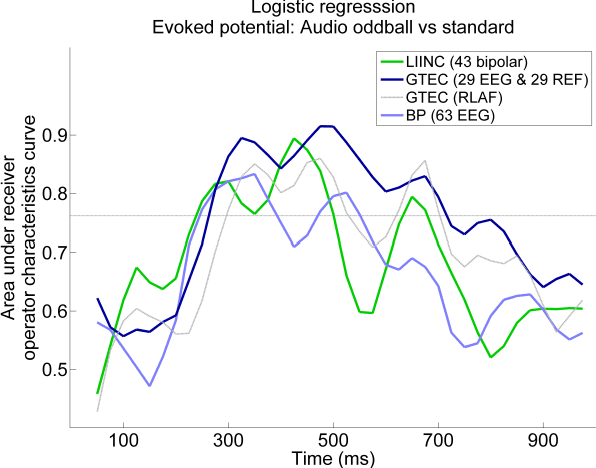
Abstract:Simultaneously recorded electroencephalography (EEG) and functional magnetic resonance imaging (fMRI) can be used to non-invasively measure the spatiotemporal dynamics of the human brain. One challenge is dealing with the artifacts that each modality introduces into the other when the two are recorded concurrently, for example the ballistocardiogram (BCG). We conducted a preliminary comparison of three different MR compatible EEG recording systems and assessed their performance in terms of single-trial classification of the EEG when simultaneously collecting fMRI. We found tradeoffs across all three systems, for example varied ease of setup and improved classification accuracy with reference electrodes (REF) but not for pulse artifact subtraction (PAS) or reference layer adaptive filtering (RLAF).
 Add to Chrome
Add to Chrome Add to Firefox
Add to Firefox Add to Edge
Add to Edge